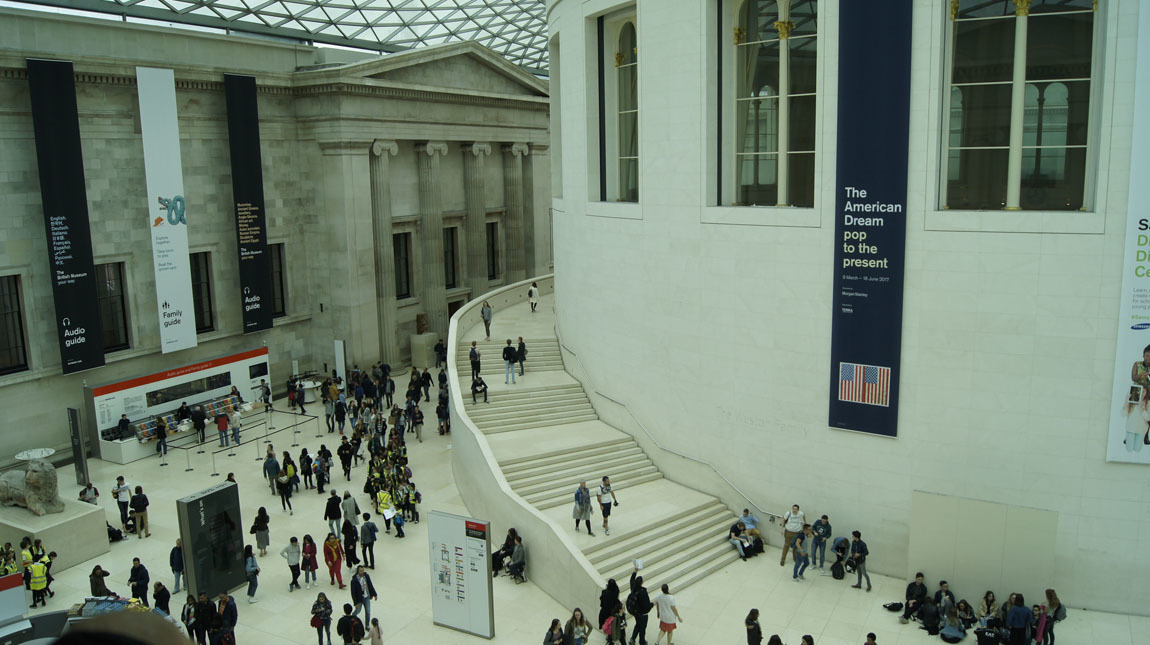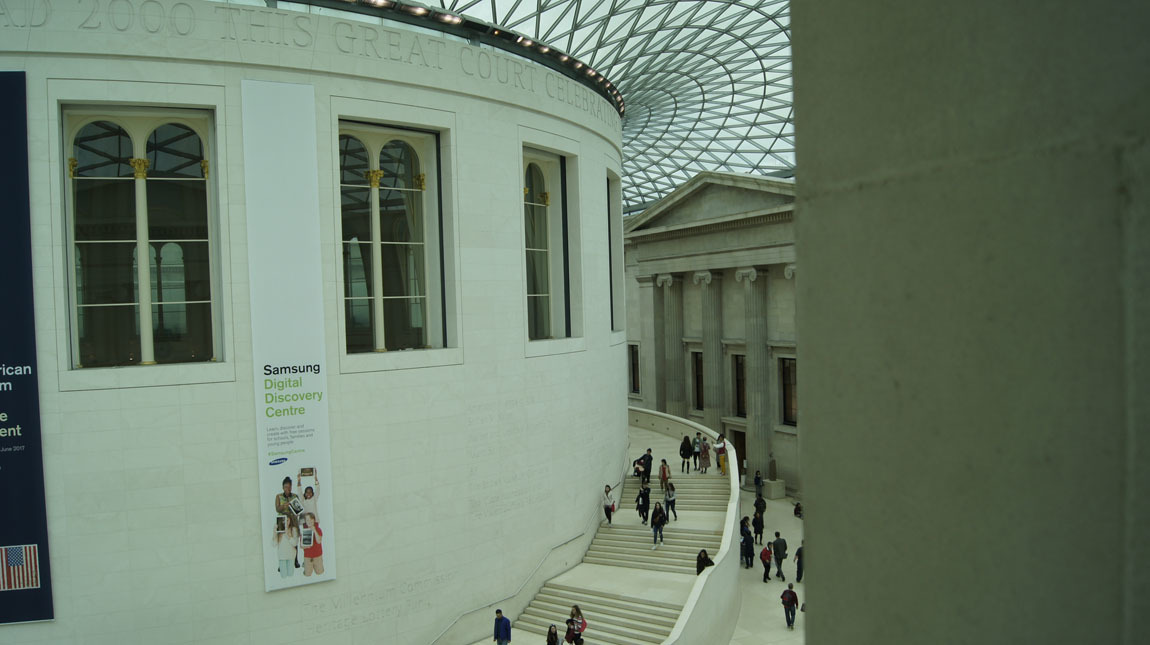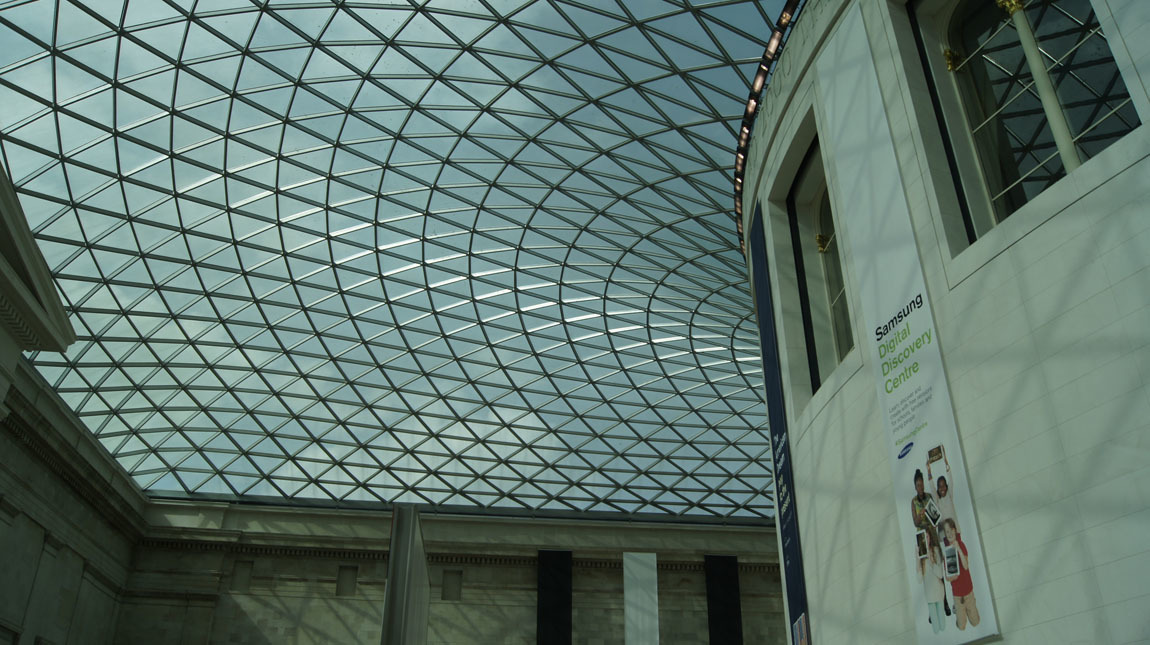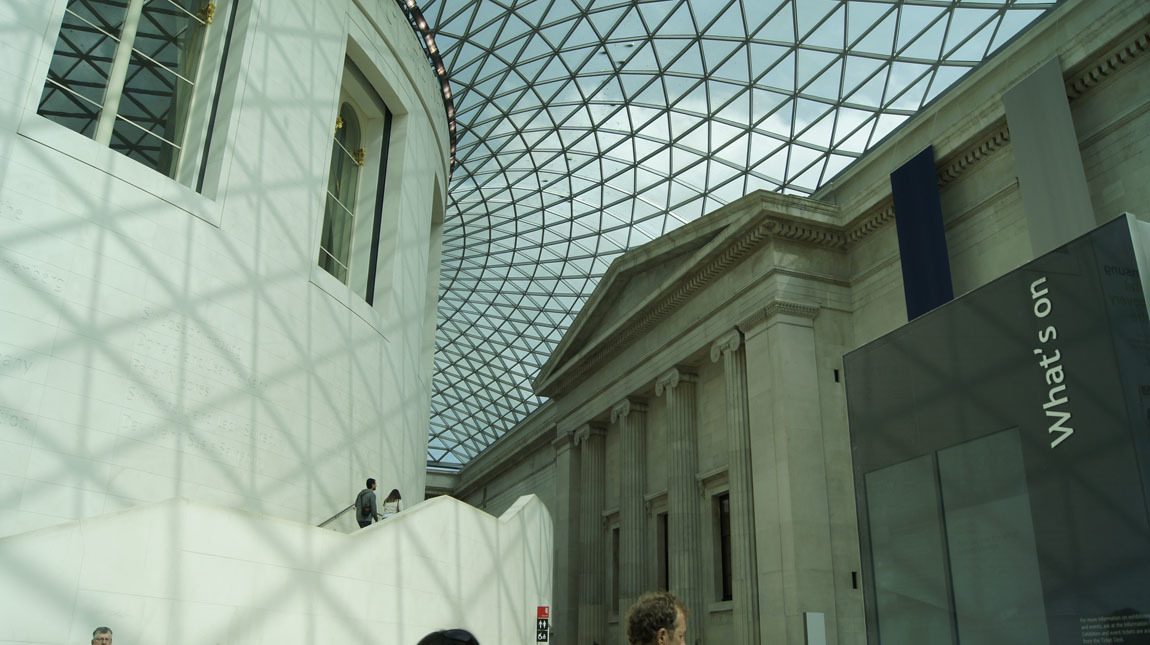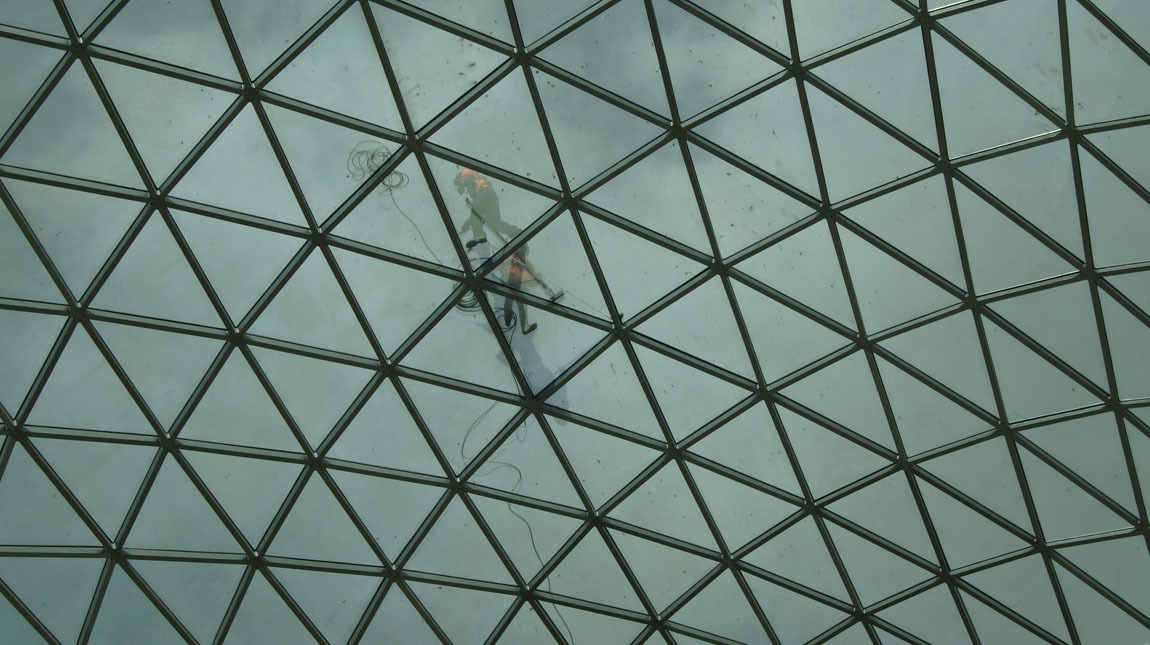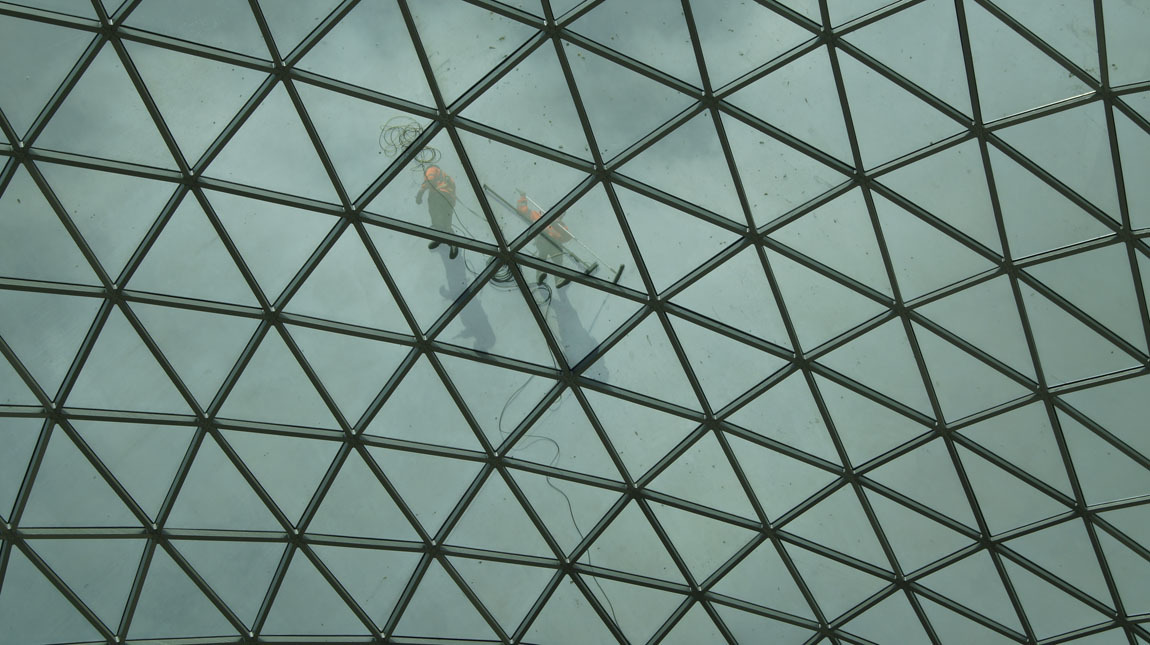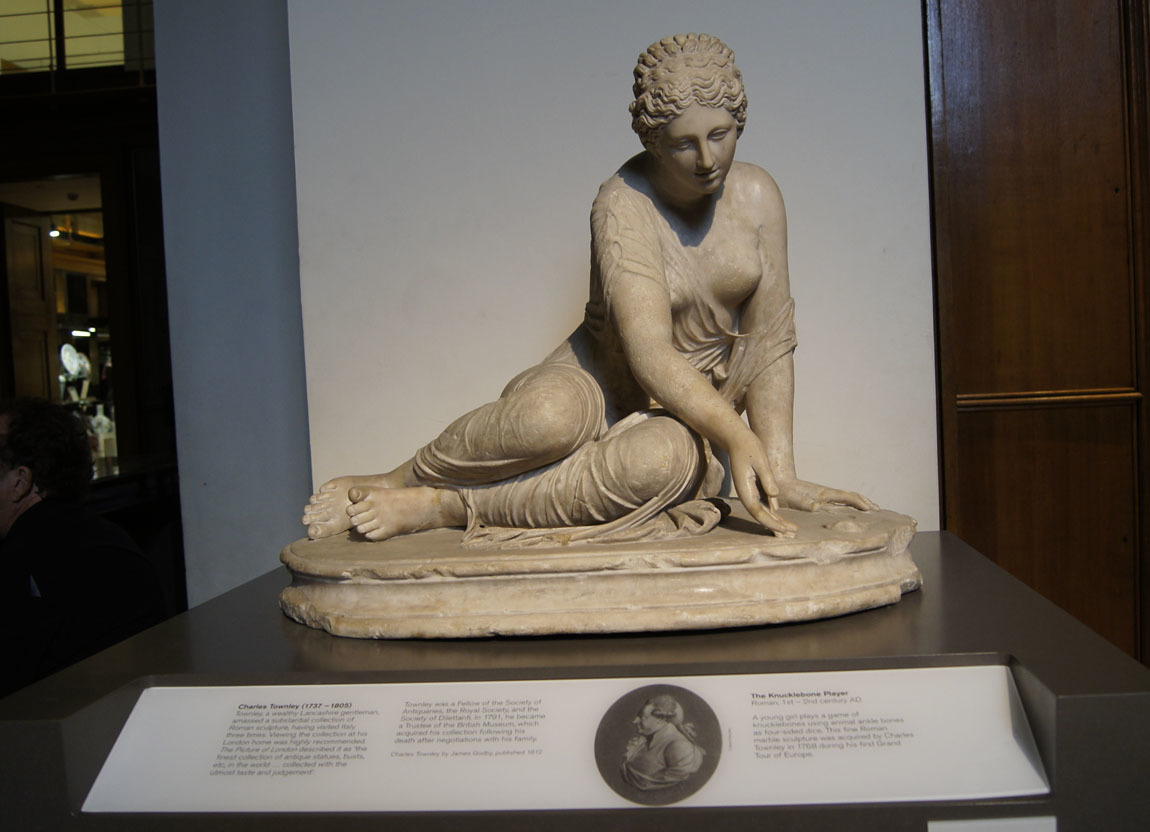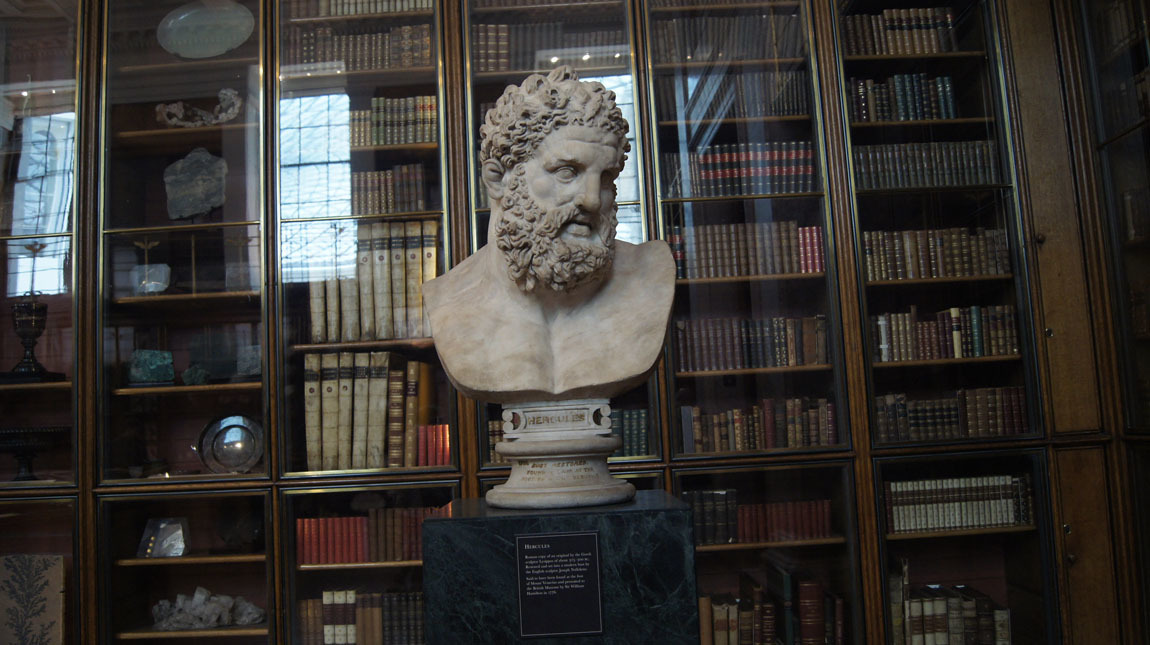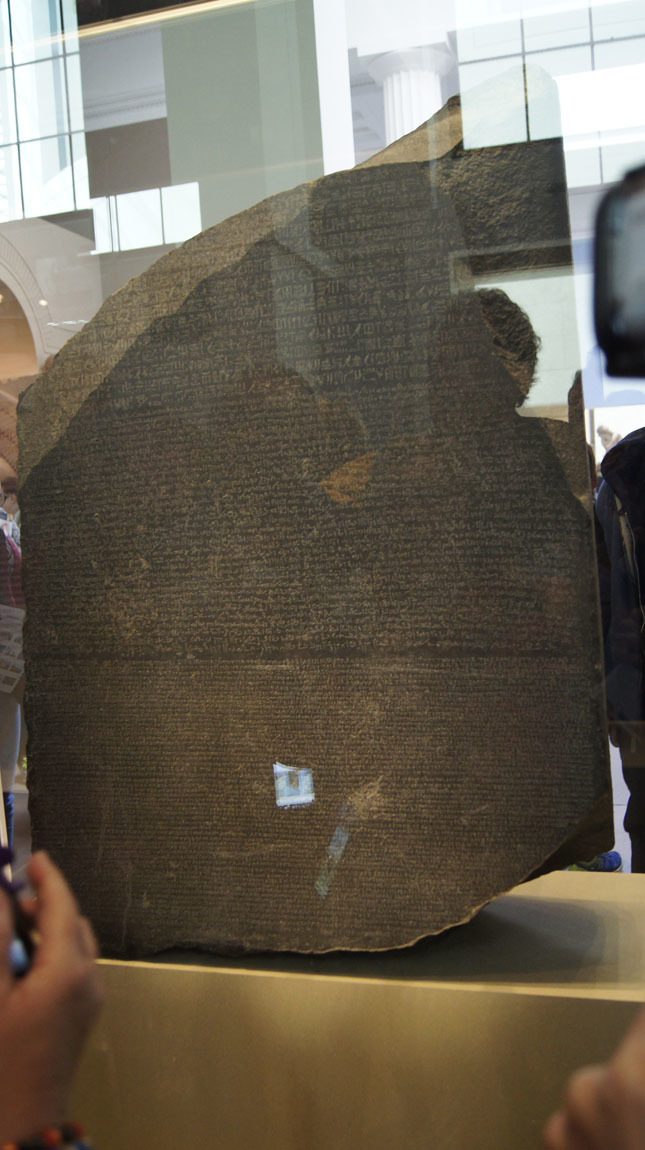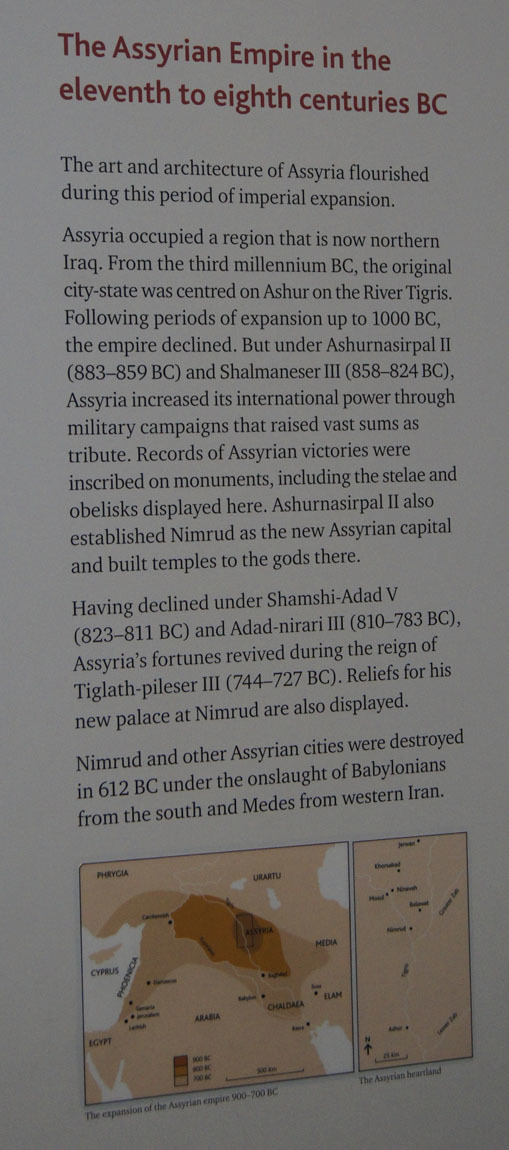May 5.
Great night sleep! This morning we are off to the British Museum. Although it opens at 9 a.m., we are not in a big hurry to leave, remembering the crowded Tube from the day before.
The British Museum is an amazing repository of British historical items, from Britain itself and all of its colonies. (In fact, there was a special "American Dream Exhibition" while we were there - we skipped that.) Here is the entry way:
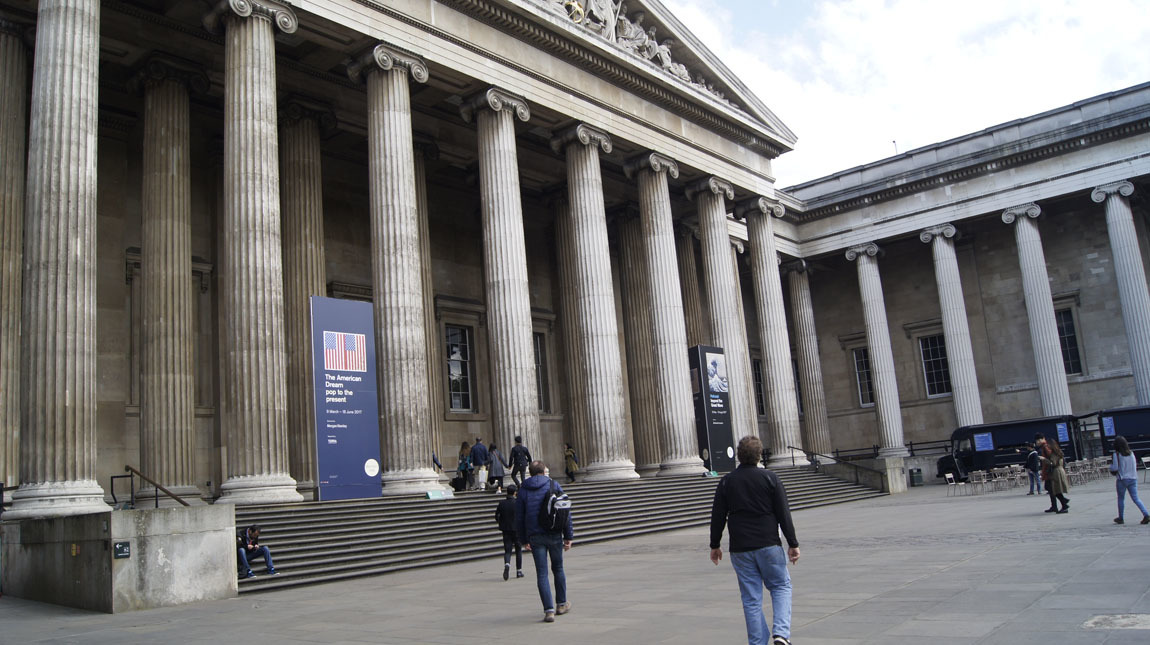
I also like the view across the street:
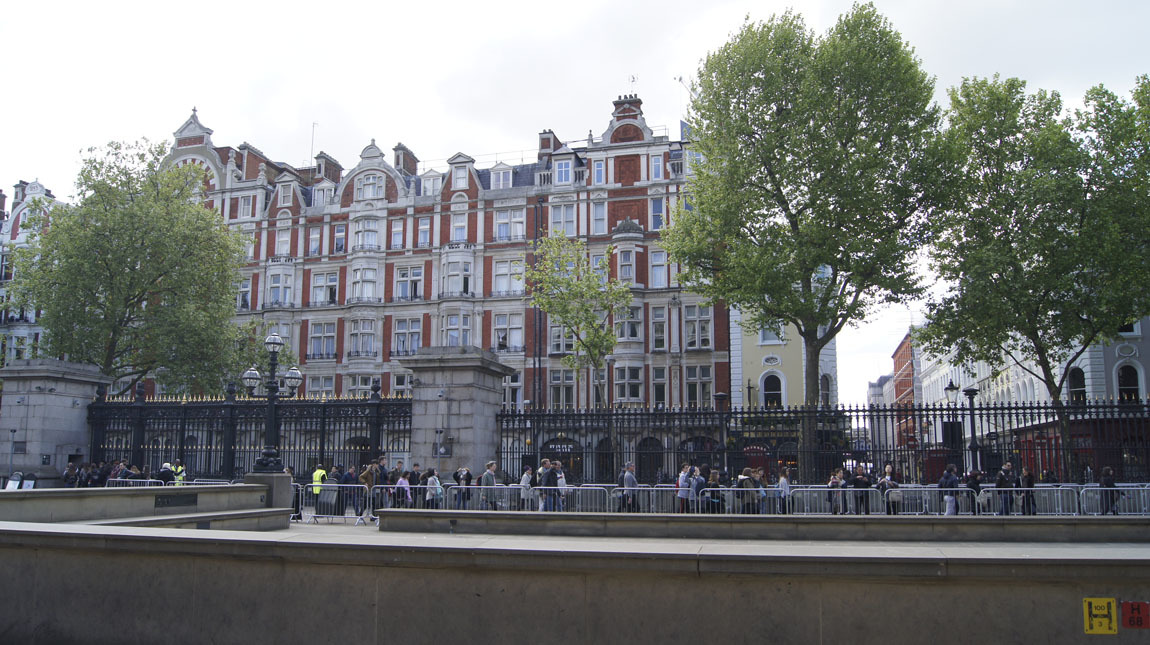
We first walk into a long, long library: books on the walls, displays in the center. The display below is of vases from the 1500s. One shows river gods in a landscape, one was made in a famous ceramic workshop in Italy whose wares were hunted down by collectors.
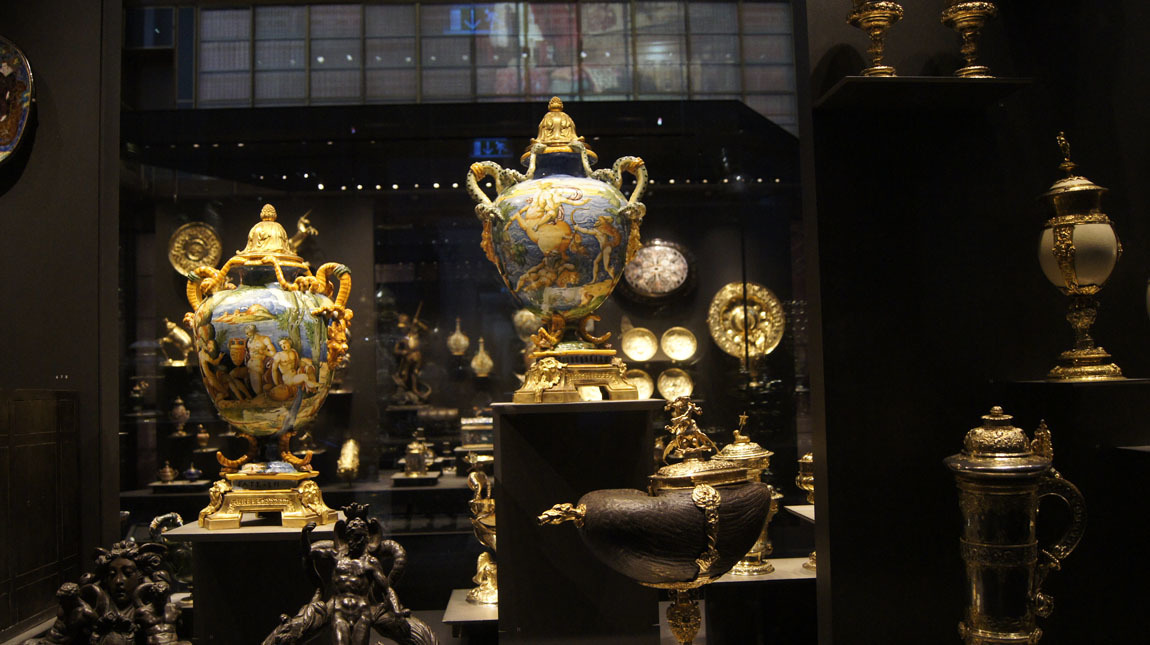
John liked this microsculpture.
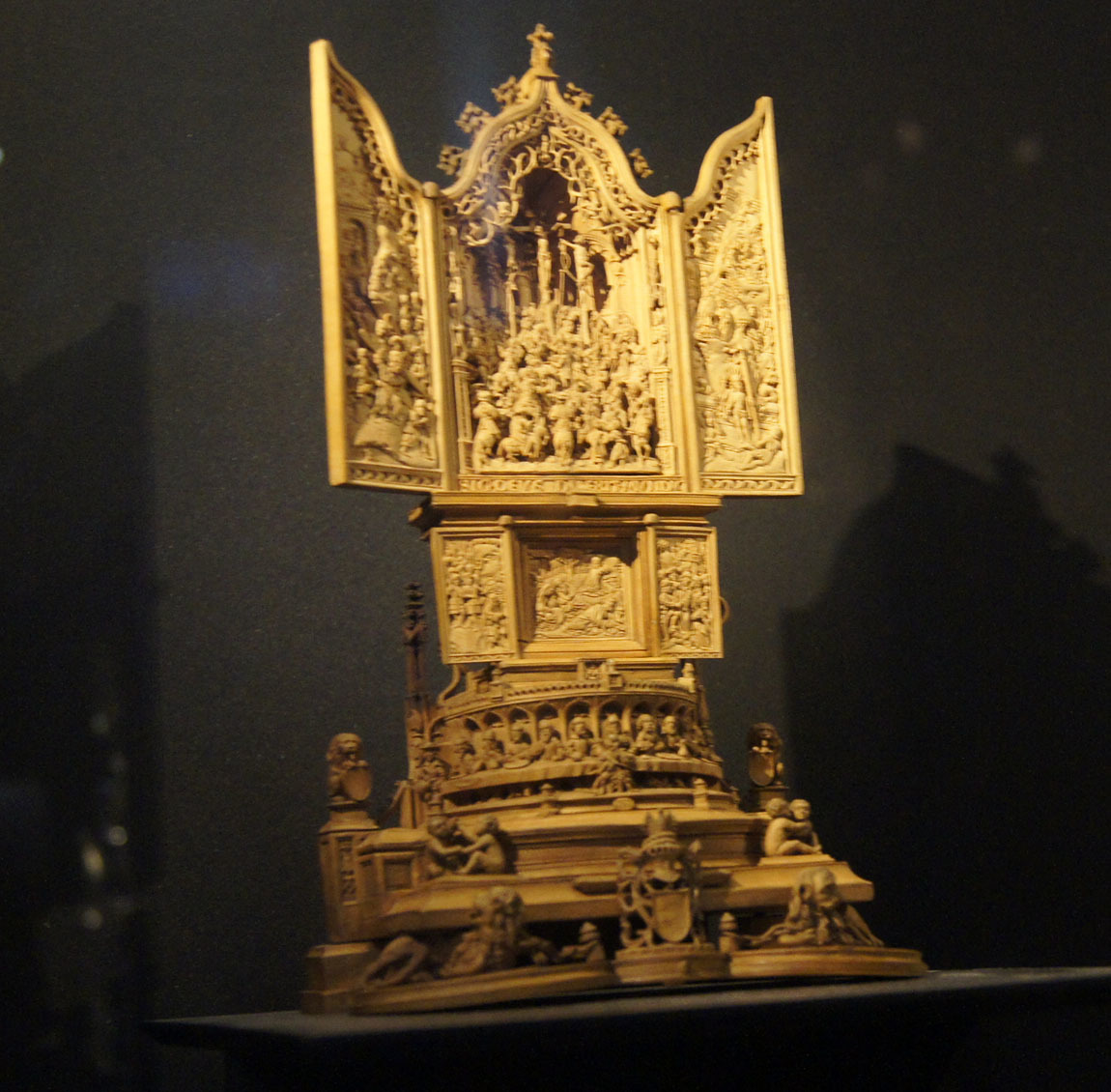
Sign for the above micro sculpture: "Around 1500, sculptors in the Northern Netherlands invented a new art form: microscopic sculptures carved in wood, which tell the Christian story and encourage the viewer to identify with its message. Made for private devotion and enjoyment, they are virtuoso masterpieces, which have always been treasured as objects of wonder and curiosity. The remarkable group in the Woddesdon Bequest are made of boxwood, a densely grained wood which can be carved in great detail. The altar shown here is one of the most splendid examples to survive. Dated 1511, the altar is carved with scenes from the life and Passion of Christ. Doors open to reveal the Crucifixion, with detailed figures set within a vaulted interior. The inside of the doors show Christ Carrying the Cross on the left, and the Resurrection on the right. Beneath is the Last Supper. The disciples sit with Jesus behind a table, with Judas, who will betray Jesus, isolated at the front. Beneath is a small label dated 1511. Flanking the scene are playful cherubs and lions holding shields, which would originally have identified the patron for whom this sculpture was made."
"The Knucklebone Player", below, is a marble Roman sculpture from the 1st-2nd century AD. "A young girl plays a game of knucklebones using animal ankle bones as four-sided dice."
"Hercules", below, is a Roman copy of an original by the Greek sculptor Lysippos of about 325-300 BC. Restored and set into a modern bust by the English sculptor Joseph Nolllekens, it is said to have been found at the foot of Mount Vesuvius.
Next: the Rosetta Stone! This is the artifact that I wanted to see the most at the British Museum. The text on the Rosetta Stone is the same "decree" in three scripts, two Egyptian and one Ancient Greek, and thus is the key to deciphering Egyptian hieroglyphs. It was made in 196 BC and found in 1799 AD. Unfortunately, everyone else in the museum apparently wanted to see the Rosetta Stone too. I tried to get my camera focused on it, but there was so much people-movement and reflections off the glass that this is the best image I got:
I did get a better view with my own eyes, luckily. The Rosetta Stone fascinates me.(
See Wikipedia for more information and good photos.)
We next went to the Egyptian area, with statues as old as 1800 BC. A head:
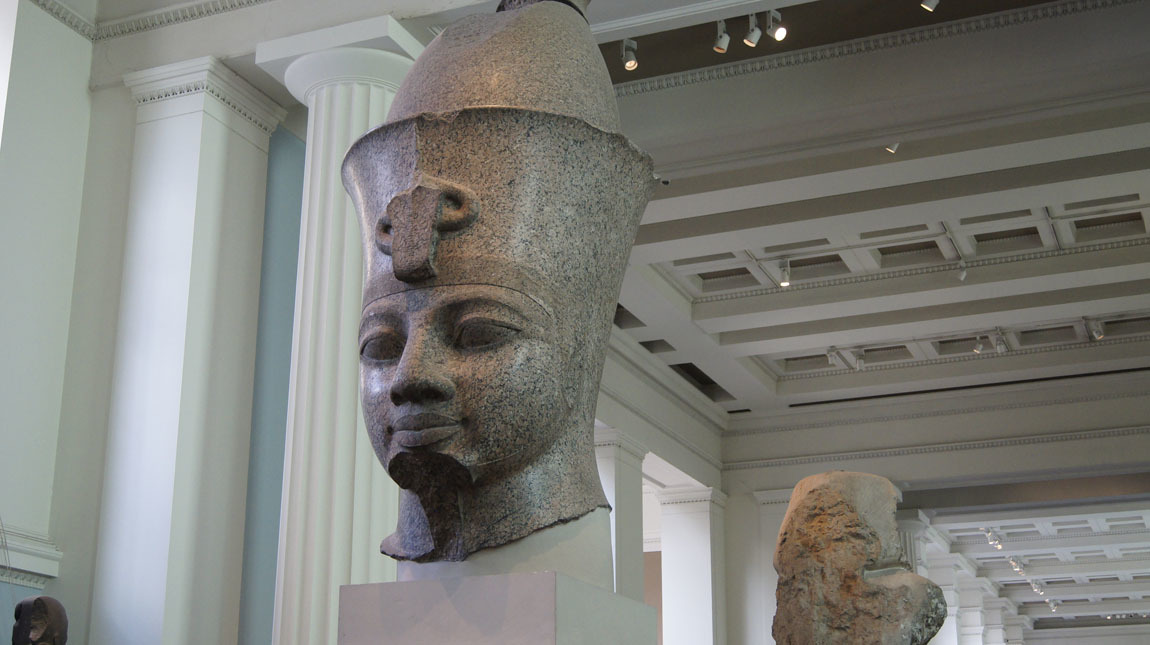
A big fist and a lot of museum visitors:
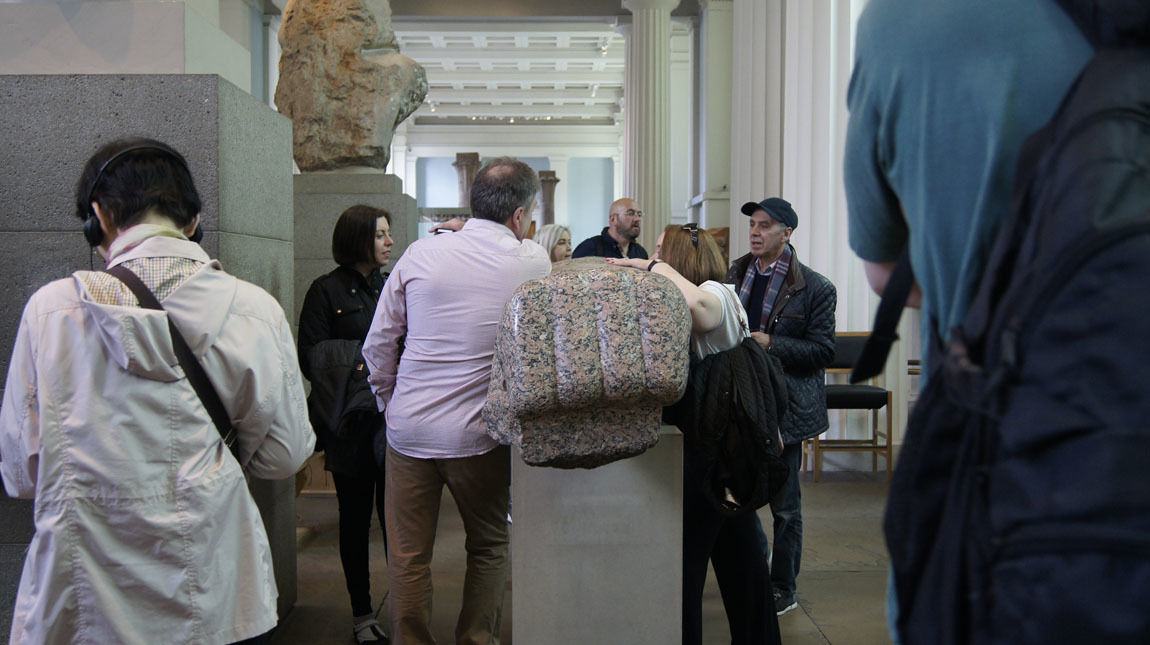
Note the "Please do not touch" on this next one (!), the Statue of Rehuankh, about 1800 BC:
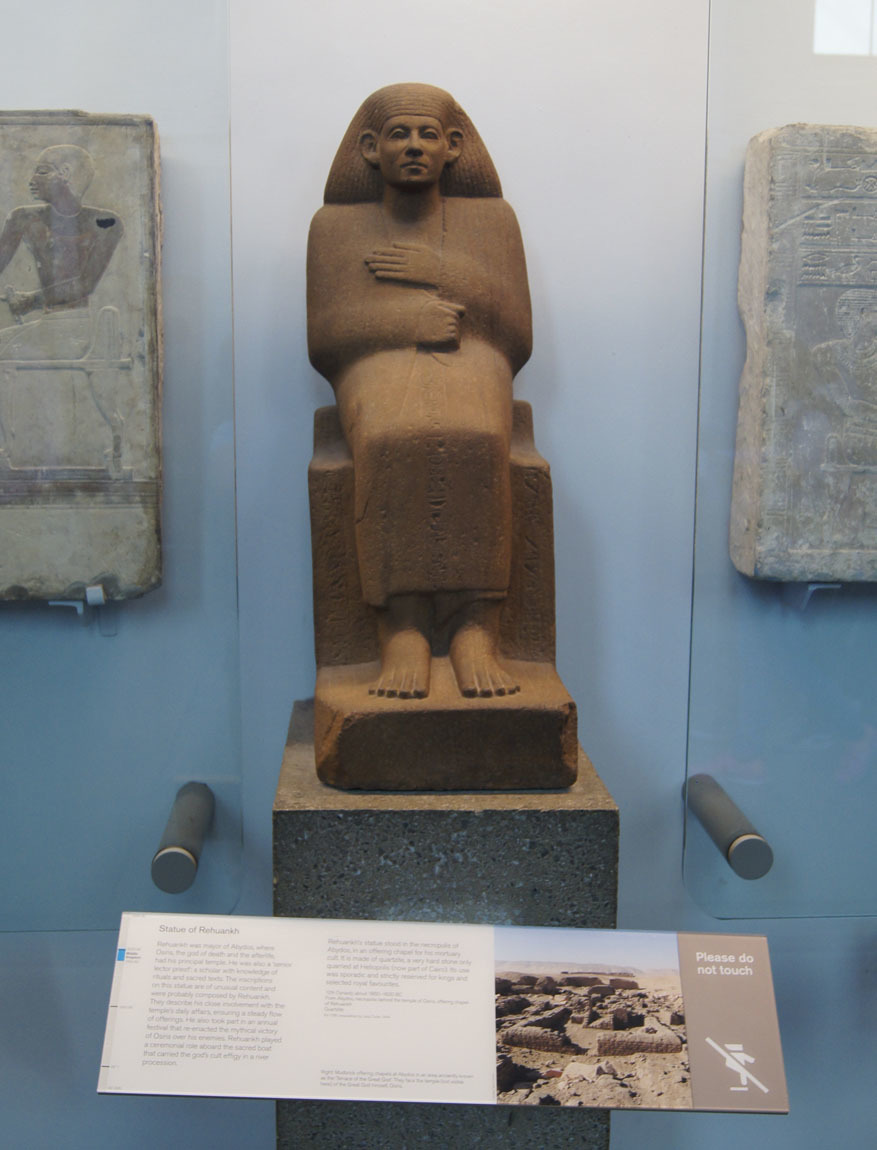
More:
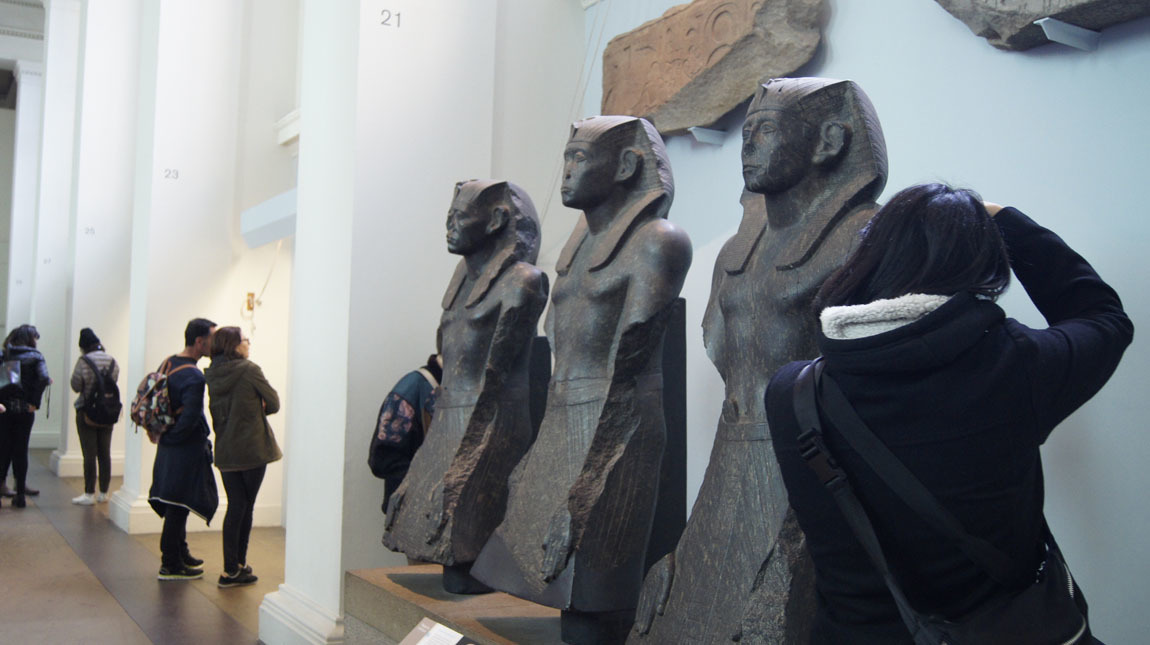
King Amenhotep III as a lion. "The statue and its pair guarded a temple at Soleb, Upper Nubia." (About 1390 BC.)
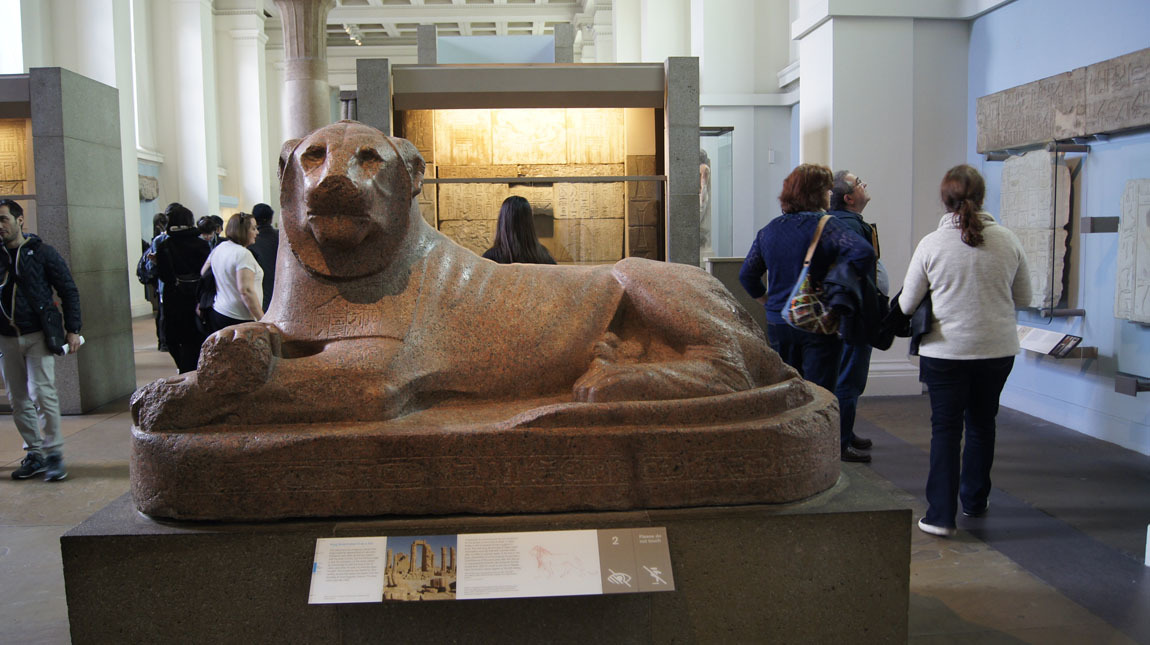
Our JHF Poly High class name (1967) was "Assyrians":
Mummies! This is one of my favorite rooms in the British Museum.
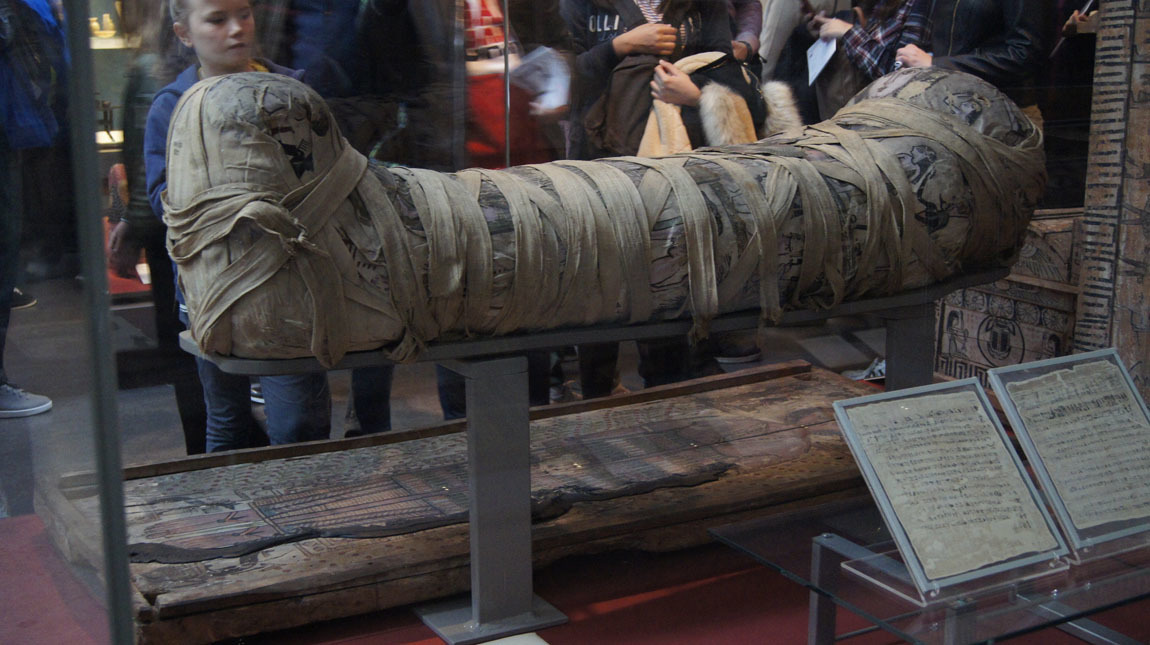
The above is: "Cleopatra: the mummy of a young woman. The mummy and coffin of Cleopatra, daughter of Candace, from the Soter family burial." She was 17 years old.
Hypocephali:
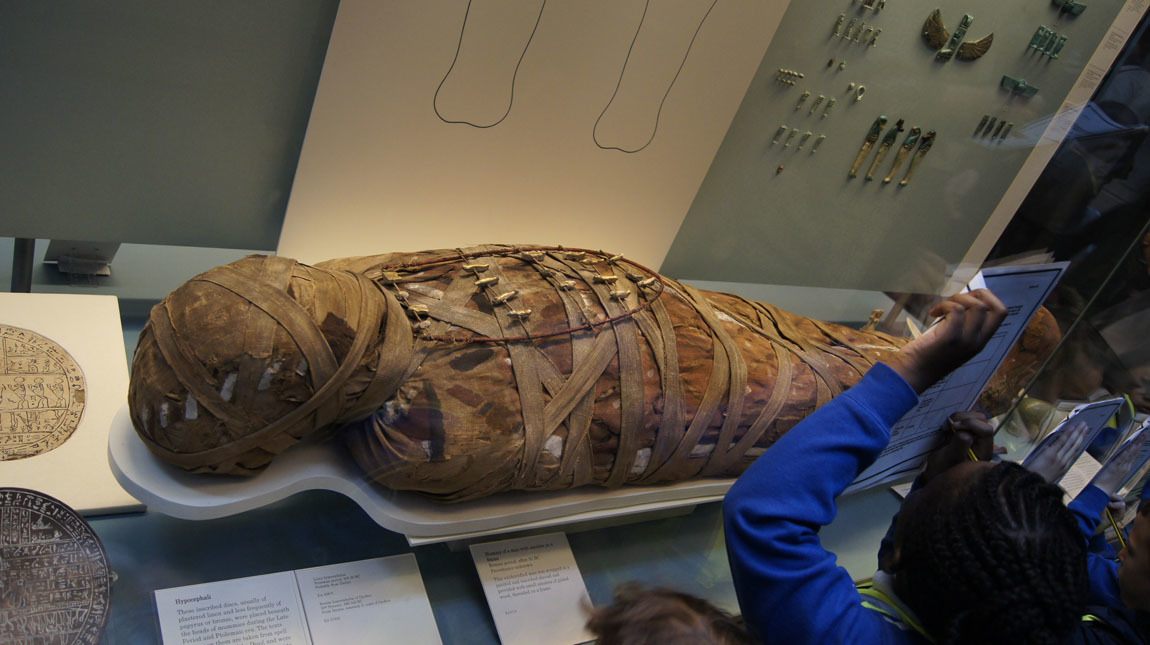
This one shows an X-ray of the above mummy:
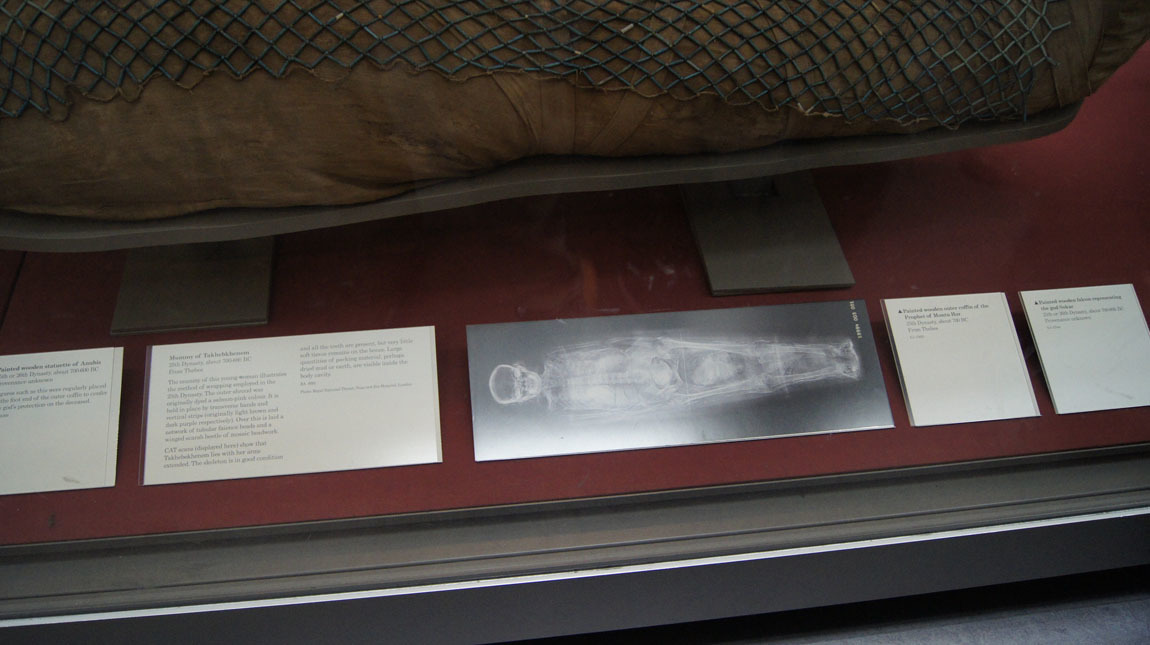
"The mummy of this young woman illustrates the method of wrapping employed in the 25th Dynasty. The outer shroud was originally dyed a salmon-pink colour. It is held in place by transverse bands and vertical strips (originally light brown and dark purple respectively). Over this is laid a network of tubular faience beads and a winged scarab beetle of mosaic beadwork. (Mummy of Takhebkhenem, about 700-680 BC, from Thebes.)"
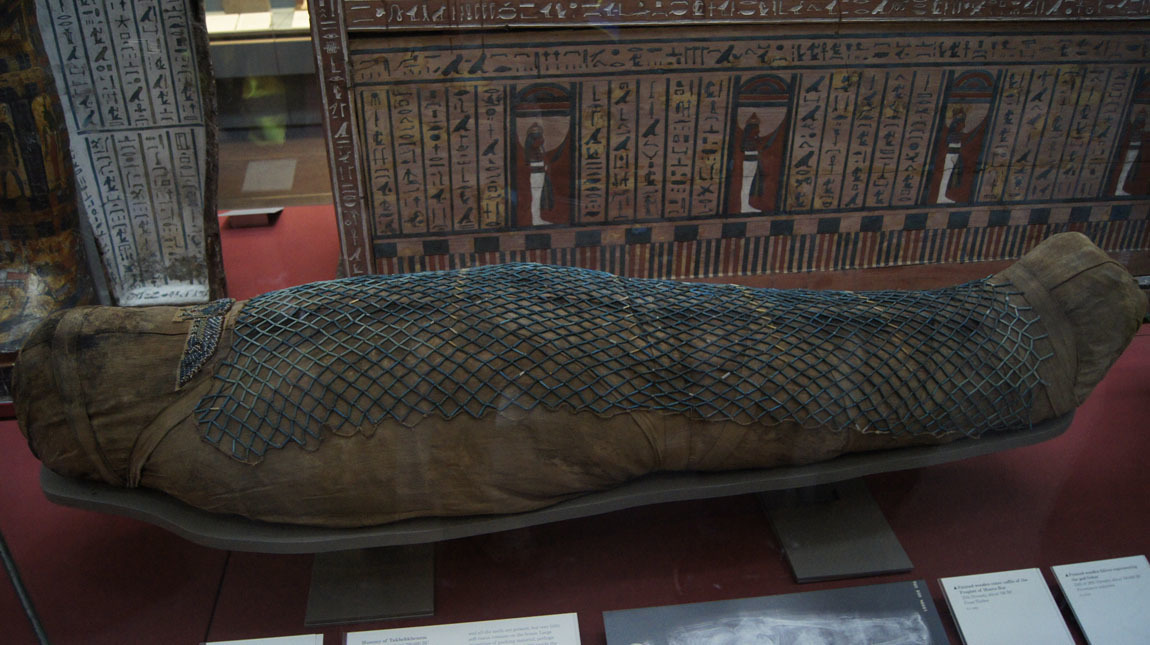
The mummy of Katebet, about 1300 BC, Thebes:
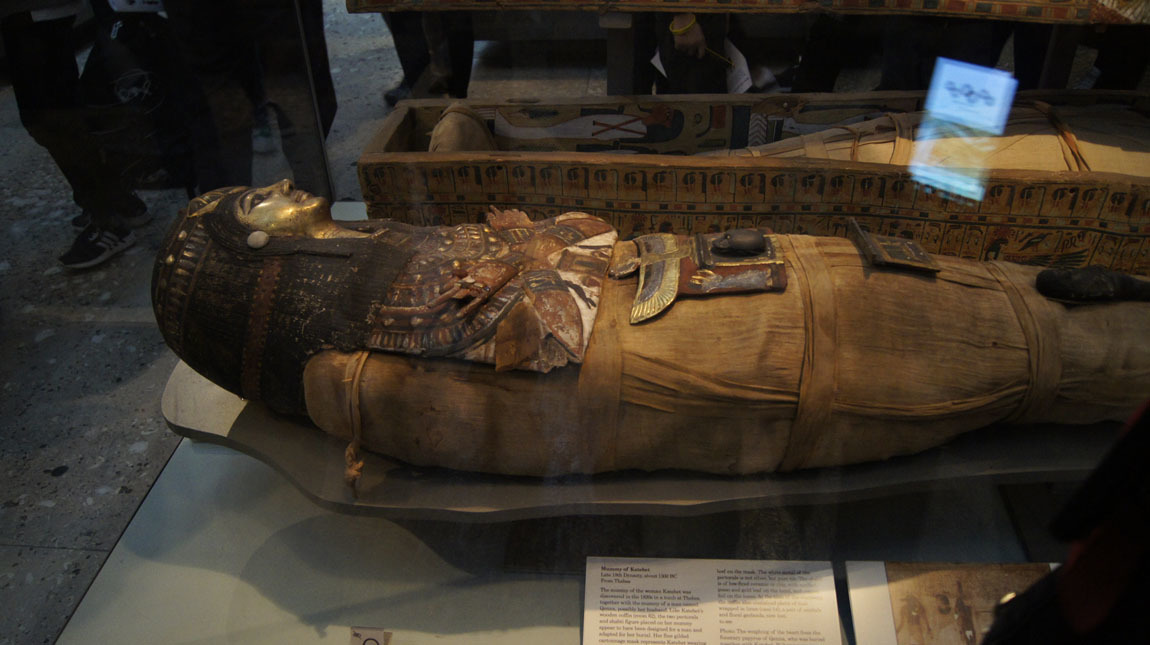
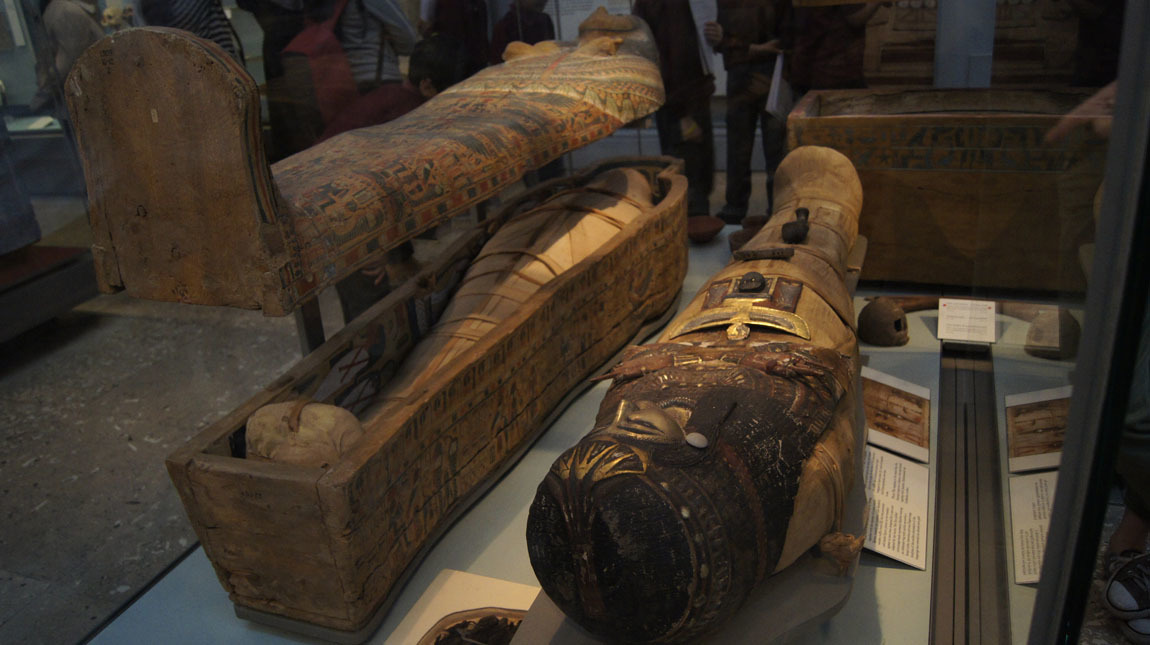
The photo below is one of me and was designed and shot by John. He was looking at a gold neck adornment, and noted that an image of it was projected onto a passerby. So he set me up, took the photo, and here I am "wearing" this golden adornment:
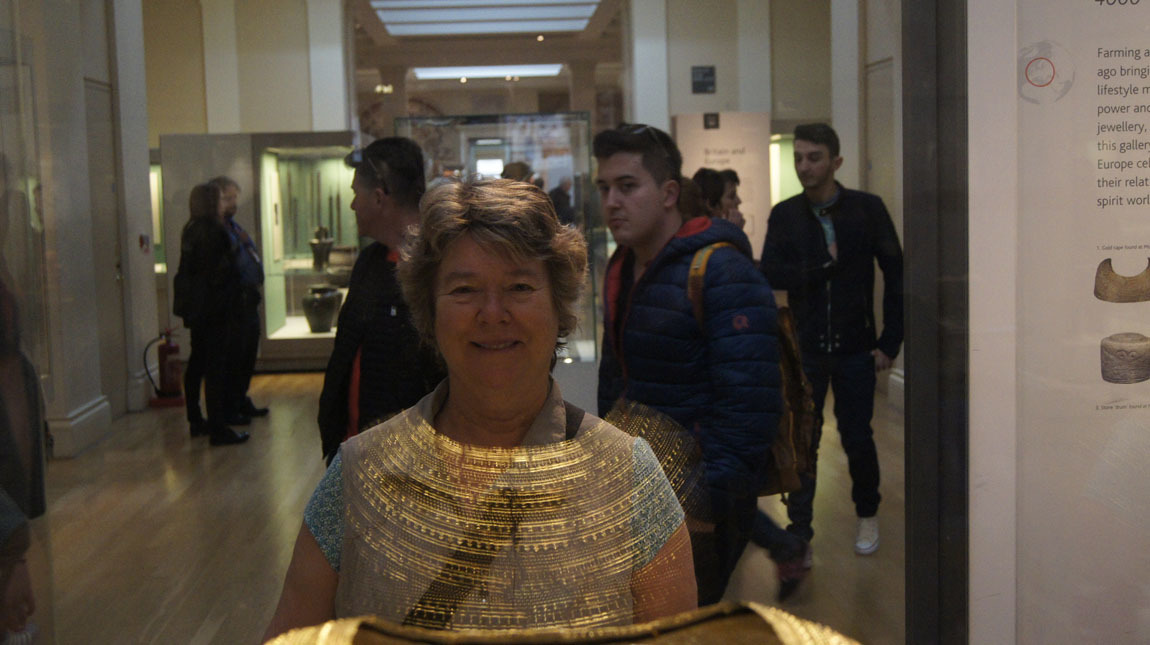
Enough! We are getting tired and hungry and head out of the museum.
Next London blog entry.
